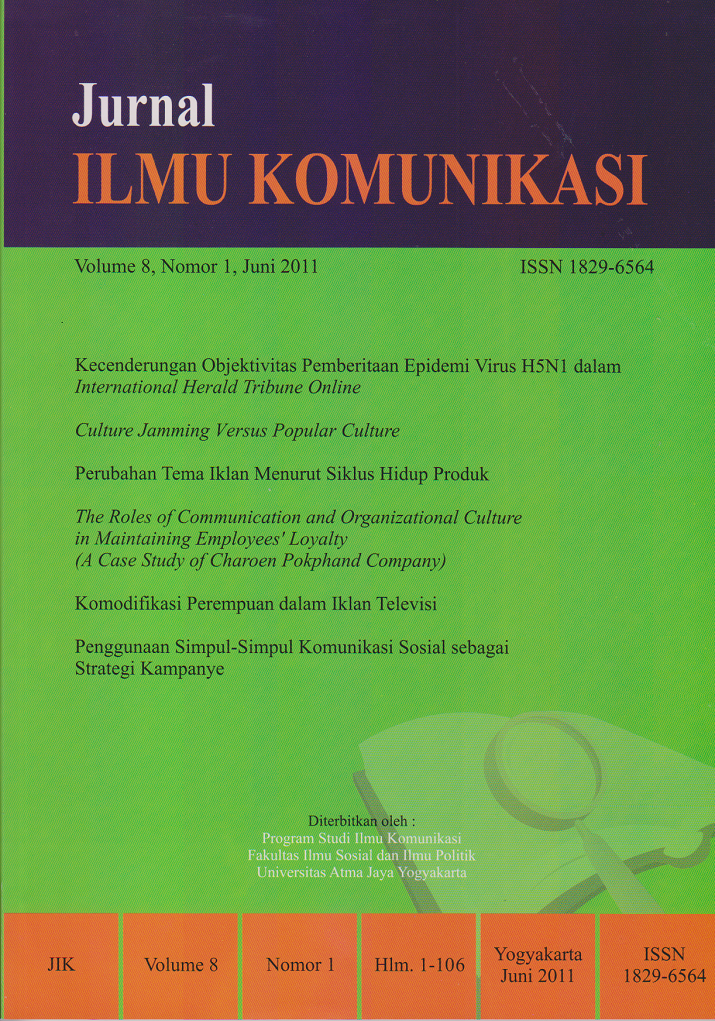Kecenderungan Objektivitas Pemberitaan Epidemi Virus H5N1 dalam International Herald Tribune Online
DOI:
https://doi.org/10.24002/jik.v8i1.178Abstract
Abstract: Newspapers have to be objective in representing the news to the audience. This research wanted to measure the objectivity’s tendency of the news about H5N1 virus, which attacked Indonesia in year 2003. The news’ objectivities on International Herald Tribune from January 2005 until December 2006 were being measured with the Westerstahl’s Objectivity’s Principle and content analysis as the method. There are 2 dimensions in Westerstahl’s Objectivity’s Principle. First is factuality, which consists of truth and relevance, and the second one is impartiality which consists of balance and neutral presentation.
 Abstrak: Surat kabar harus obyektif dalam menyajikan berita kepada audiens. Riset ini ingin mengukur kecenderungan obyektivitas berita tentang virus H5N1 yang melanda Indonesia pada tahun 2003. Obyektivitas berita diukur berdasar prinsip-prinsip obyektivitas Westerstahl dan menggunakan metode analisis isi. Ada dua dimensi dalam prinsip-prinsip obyektivitas Westerstahl. Pertama adalah faktualitas yang terdiri dari kebenaran dan relevansi, dan yang kedua adalah imparsialitas yang terdiri dari keseimbangan dan penyajian yang netral.
Downloads
Published
How to Cite
Issue
Section
License
Jurnal ILMU KOMUNIKASI is an academic journal. As such, it is dedicated to the open exchange of information. For this reason, JIK is freely available to individuals and institutions. Authors who publish in Jurnal ILMU KOMUNIKASI will release their articles under the Creative Commons Attribution (BY) License. This license allows anyone to copy and redistribute the article in any medium or format as well as remix, transform, and build upon the material for any purpose, even commercially as long as they credit the authors for the original creation. For details of the rights authors grants users of their work, see the "human-readable summary" of the license, with a link to the full license. (Note that "you" refers to a user, not an author, in the summary)
 This work is licensed under a Creative Commons Attribution 4.0 International License.
This work is licensed under a Creative Commons Attribution 4.0 International License.














